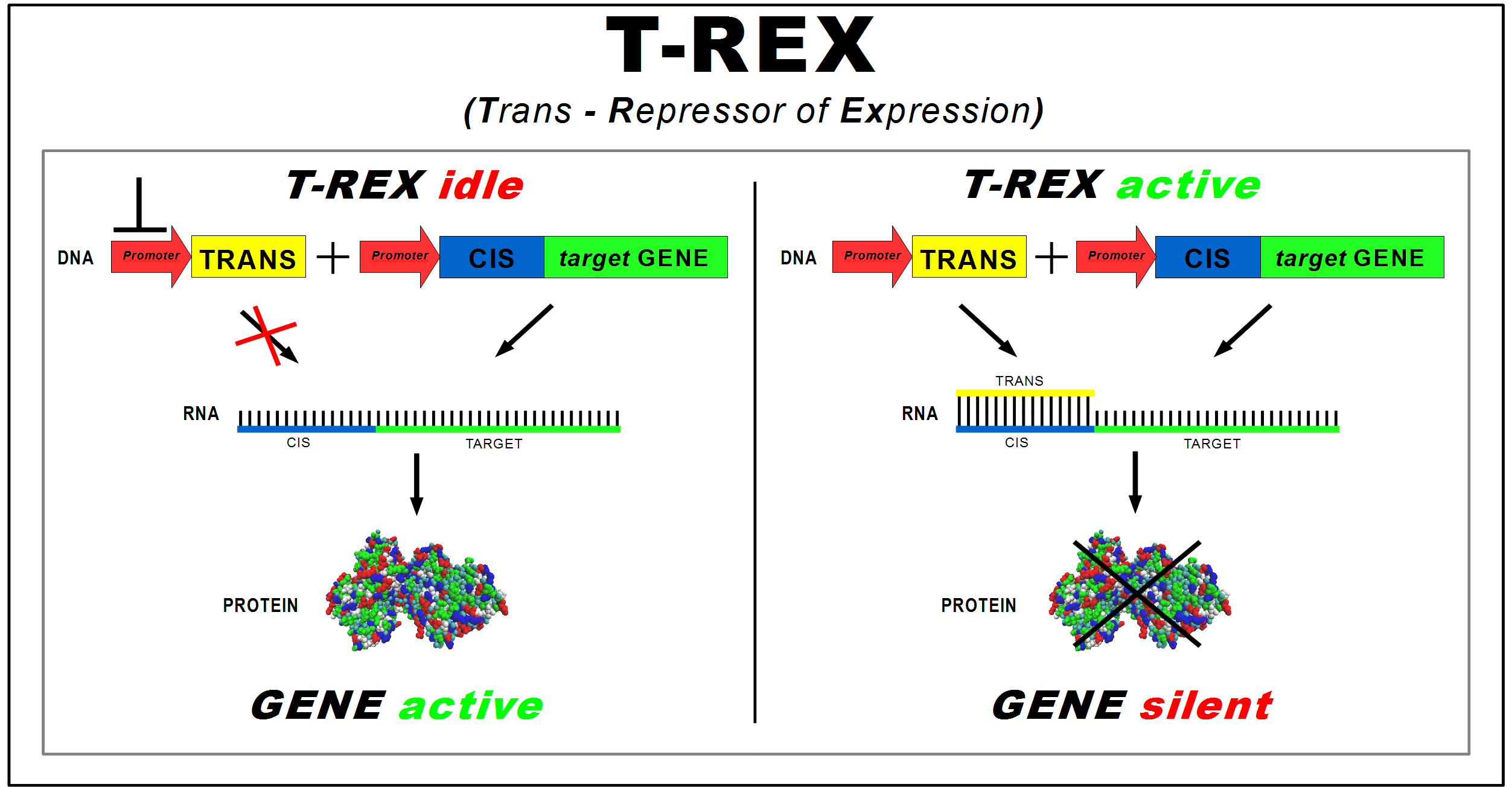Team:Bologna
From 2009.igem.org
| HOME | TEAM | PROJECT | SOFTWARE | MODELING | WET LAB | PARTS | HUMAN PRACTICE | JUDGING CRITERIA |
|---|
Project Description
Which is our idea?
Our project aims the realization of a device for gene expression regulation at translation level, regardless of the target gene.
How can we achieve this?
We designed a 50bp non coding sequence (CIS - repressing) to be assembled upstream of the target gene RBS, while its complementary sequence (TRANS - repressor) is to be placed under the control of another promoter. The TRANS - repressing contains also a cover, that is a short sequence complementary to the RBS. When the TRANS-repressor element is present, it binds to the CIS-repressing, forming a RNA duplex and producing an obstruction that prevents the ribosome binding to the RBS.
What can we use it for?
After doing some tests to prove that the presence of CIS – repressing doesn't alter the cell normal activities, we are trying to realize some simple circuits in order to characterize our device. Several are the possible future applications, but at the moment we are aiming to oscillators and flip-flop memories.
More details about our work in the Project section.
Project Abstract
The project aims to realize a device with standard biological parts for the post-transcriptional control of gene expression, regardless of the gene sequence to be silenced.
To achieve this, we designed the T-REX device, composed of two standard parts: the TRANS-repressor and the CIS-repressing elements. The TRANS-repressor is a non-coding DNA sequence, the transcript of which acts as a silencer of the CIS-repressing RNA target. This target includes a region complementary to the sequence of the TRANS-repressor antisense, ends with a ribosome binding site (RBS), and is assembled upstream of the coding sequence of the gene to be silenced. Upon binding of TRANS-repressor and CIS-repressing RNAs, the access to RBS by ribosomes is hampered, silencing translation from the downstream transcript. Accordingly, The amount of TRANS-repressor controls the translation rate of the regulated gene.
The TRANS-repressor sequence was determined by a computational analysis performed to minimize the interference with the genomic mRNAs and to maximize the base-pairing interaction to the CIS-repressing RNA.
The T-REX device is proposed as a universal and fast switch in synthetic gene circuits.
Acknowledgements
 "
"




